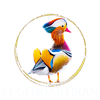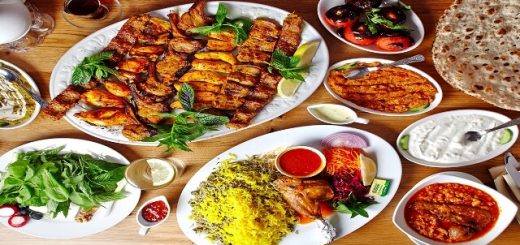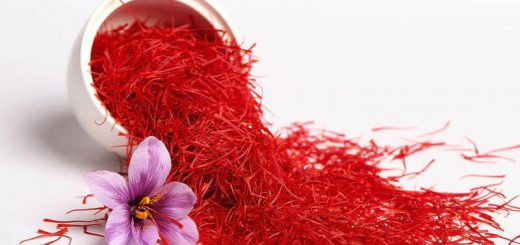Persian Bread
by Admin · September 30, 2020
Different Types of Persian Bread to try When You Visit Iran
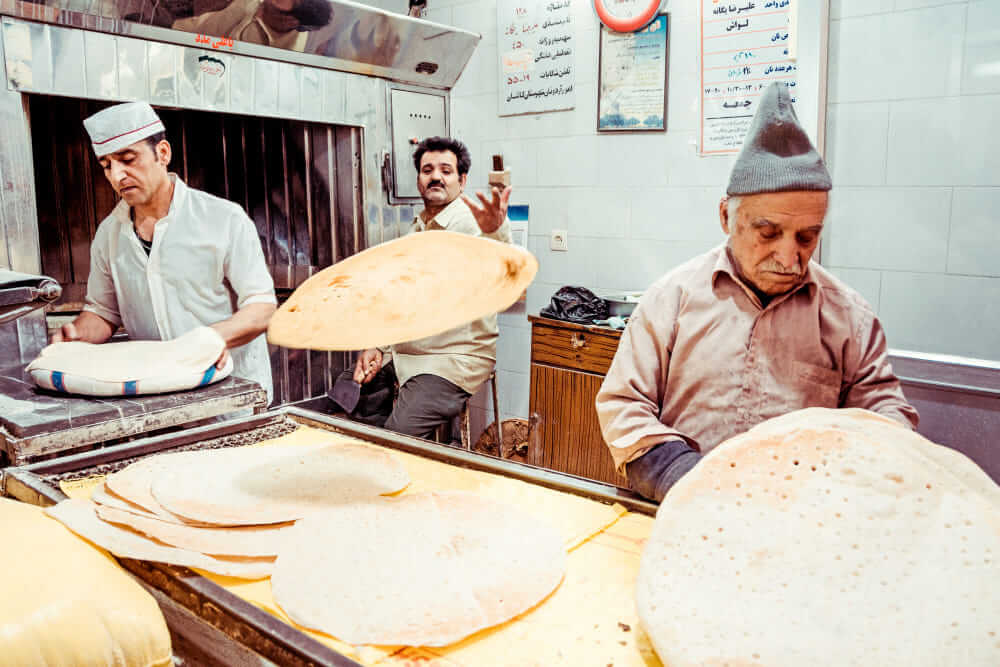
Iran’s diversity is not limited to its geography, climate, or ethnic groups; it is also reflected in its bread. No matter how it is cooked, whether it is flat or puffy, tandoor-baked or fried, bread plays an important role in Persian cuisine. There are different types of bread in Iran that are had for breakfast or with the main meal.
Also, due to diverse geographical and cultural influences, Persian bread varies from region to region.
Hence, you cannot miss tasting and enjoying traditional Iranian bread during your visit to Iran as a tourist. Different types of traditional Iranian breads you should try on your trip to Iran include Lavash bread, Barbari bread, Sangak bread, Taftoon bread, Naan Shirmal, etc.
1· In Persian culture, bread is “the blessing of the table.” Accordingly, Iranians are careful not to drop a piece of bread on the ground.
2· The traditional Iranian breads are usually in the form of flatbread.
3· Iranian people usually stand in long lines at the bakeries to buy traditional bread.
4· In Iran, you can watch the interesting process of baking bread in the traditional bakeries while you are waiting in the queue.
5· Iran, Azerbaijan, Kazakhstan, Kyrgyzstan, and Turkey, along with Armenia, are on the Representative List of the UNESCO Intangible Cultural Heritage of Lavash Bread.
6· Sangak, known as the National Iranian bread, is baked in a unique tandoor on a bed of small stones.
7· CNN has published the Iranian Sangak bread on the list of 50 of the world’s best breads.
8· In villages or among nomadic tribes in Iran, you can taste different types of bread you won’t find in the bakeries of the cities.
8 Interesting Things about Iranian Bread that You May not Have Known
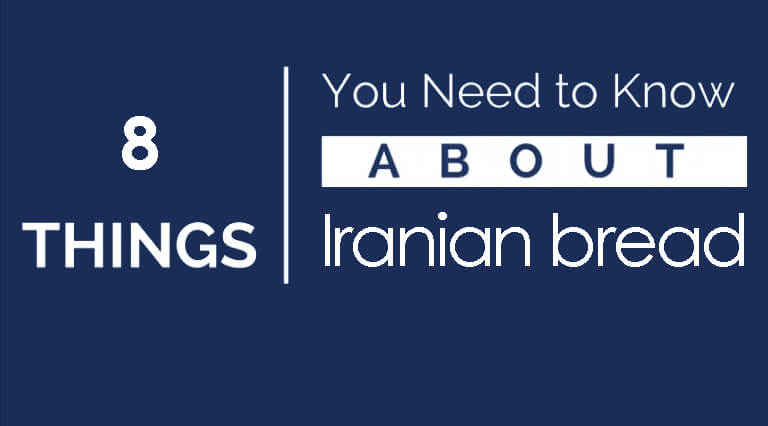
1· In Persian culture, bread is “the blessing of the table.” Accordingly, Iranians are careful not to drop a piece of bread on the ground.
2· The traditional Iranian breads are usually in the form of flatbread.
3· Iranian people usually stand in long lines at the bakeries to buy traditional bread.
4· In Iran, you can watch the interesting process of baking bread in the traditional bakeries while you are waiting in the queue.
5· Iran, Azerbaijan, Kazakhstan, Kyrgyzstan, and Turkey, along with Armenia, are on the Representative List of the UNESCO Intangible Cultural Heritage of Lavash Bread.
6· Sangak, known as the National Iranian bread, is baked in a unique tandoor on a bed of small stones.
7· CNN has published the Iranian Sangak bread on the list of 50 of the world’s best breads.
8· In villages or among nomadic tribes in Iran, you can taste different types of bread you won’t find in the bakeries of the cities.
Consumption of Bread in Iran
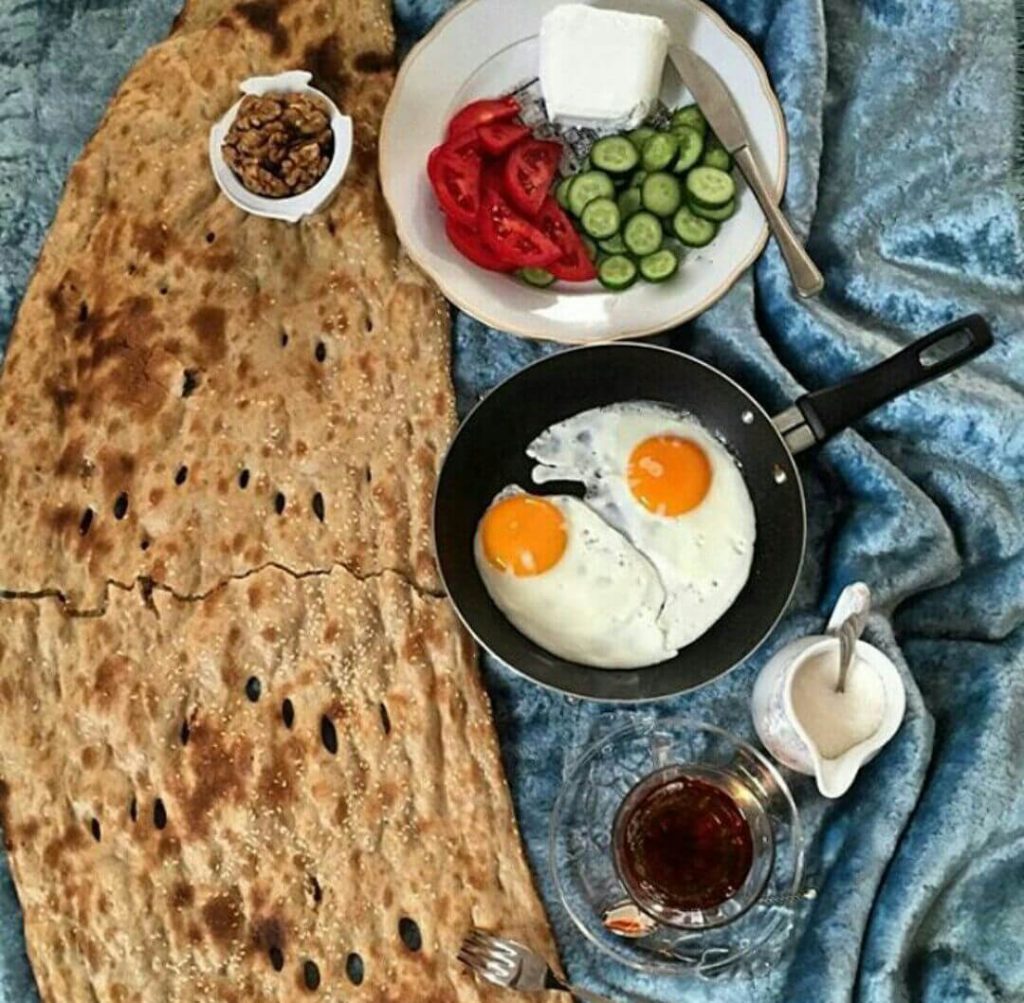
Persian Bread, or “Naan” in the Farsi language, is the most important Iranian food consumed in all Persian meals. Generally, Persian food is either eaten with rice or bread. For example, eating bread with cheese, walnut, or jam is common for breakfast in Iran.
In our country, people generally stand in line at the bakery to buy bread. These queues are usually longer early in the morning and during the first hours of the evening. However, in some large Iran cities, there are online bakeries that deliver the bread to your place.
Furthermore, some Iranian restaurants have tandoors, and they serve fresh bread with their meals.
Additionally, families prepare their own bread in rural and village areas of Iran. Accordingly, one of the main tasks of Iranian women in small villages and nomads is baking bread. They do all the processes by hand and bake bread inside the traditional clay tandoor called “Tanoor.” Furthermore, they sometimes add some ingredients like dried herbs, oil, etc. to make the bread tastier.
Usually, Tanoor is heated by dry wood, which gives a pleasant smell to the bread. Hence, we suggest not missing these local bread if you visit these places on your Iran trip.
Bakeries in Iran
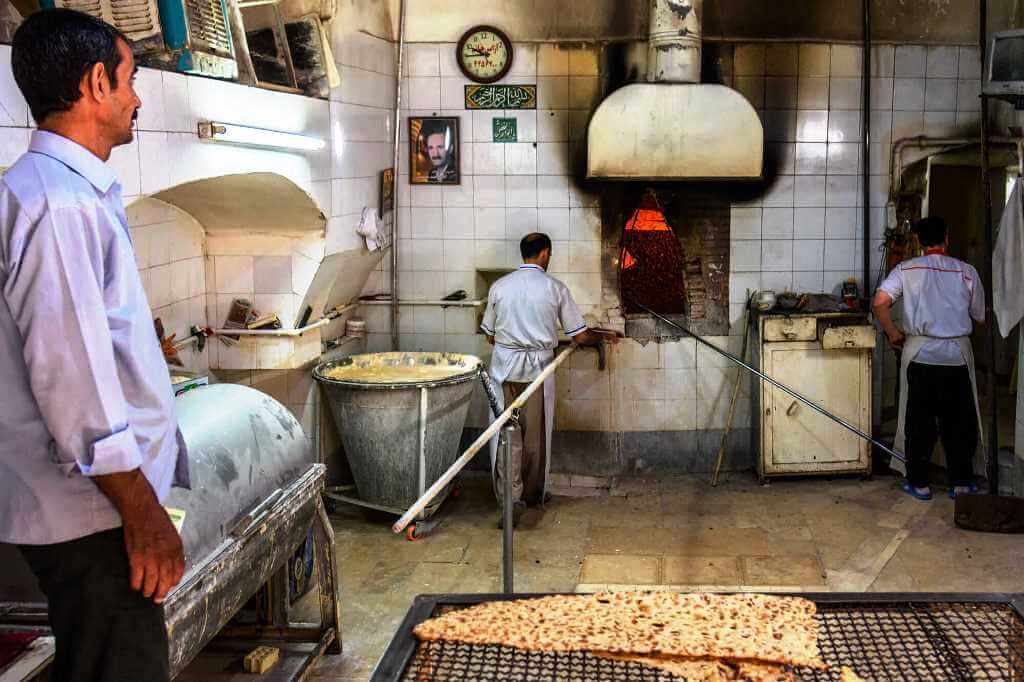
The process of baking Iranian bread in bakeries is one of the best Iran travel experiences. It is highly recommended that you at least once during your trip to Iran go to a bakery and buy some bread there. While waiting in the queue, you can watch all or most of the baking process in Iranian bakeries.
Previously, all steps of the baking process were done by hand. But many of these processes are now handled by modern equipment. Still, watching this semi-automatic process is fascinating.
The process of Baking Bread in Iran Bakeries
First, they prepare the bread dough. Then someone rolls the dough into similar balls called “Chaneh.” Another person smoothes the Chaneh with a rolling pin or hand and pours sesame or other ingredients on it. Depending on the type of oven, he attaches it to the oven wall or spreads it on a belt or revolving plate.
Another person throws the prepared bread on the customer’s table. The bakers perform these repetitive works with a certain rhythm and move their bodies as if they are dancing. You can not take your eyes off this beautiful show.
The customer then puts the bread on another table that is usually outside the bakery for a few minutes so it can cool. The purpose of this is to prevent the bread from evaporating in a plastic bag or cloth.
Iranians value bread and are careful not to drop a piece of bread. Because bread is considered a symbol of blessings in Iran, people pick up pieces of bread that fall to the ground and put them aside.
Finally, it is interesting that in some Iran cities, the queues of men and women in the bakeries are separate. In this case, one turn goes to a woman, and another turn to a man.
Different Types of Persian Bread
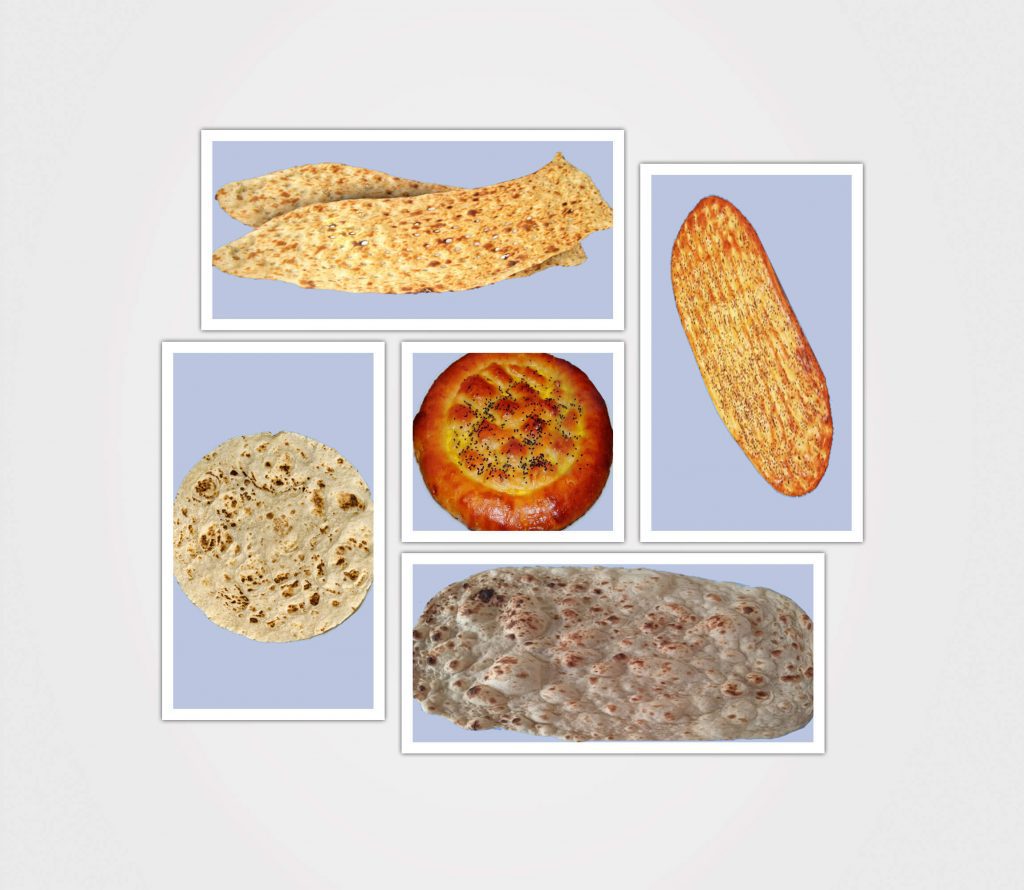
You can find diverse types of Persian bread in different regions of Iran. Here we are to introduce the kinds of Persian bread that are very popular and consumed by almost all Iranians. Also, you can find them all over Iran. It is also worth mentioning that there are some other types of local bread available in different parts of Iran.
Lavash Bread (Nan-e Lavash)
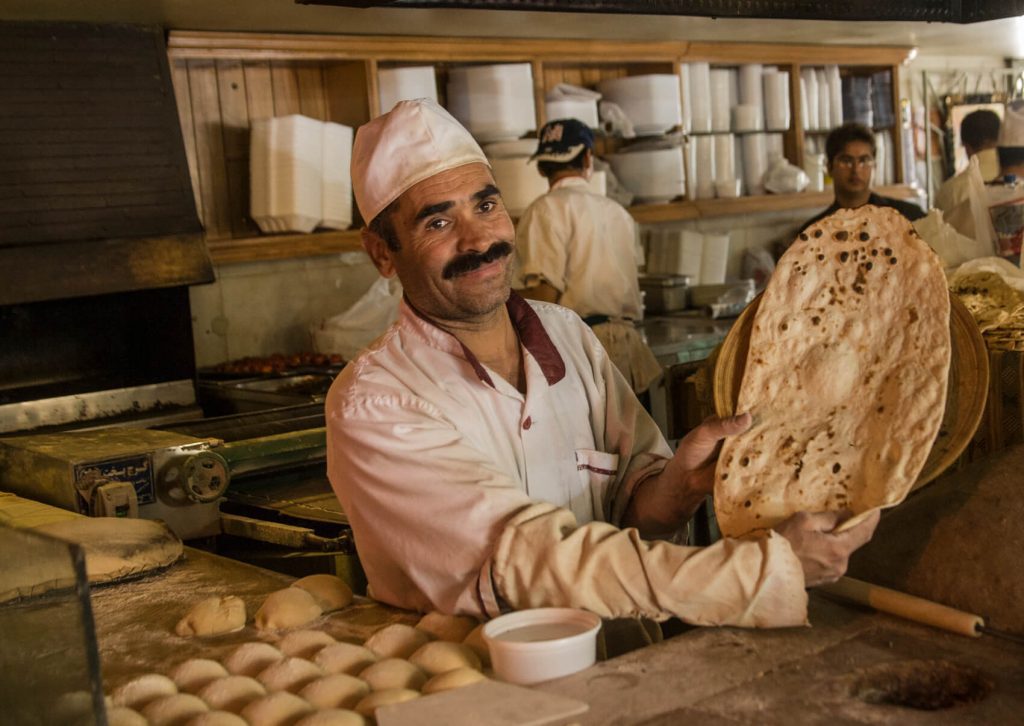
Lavash Bread or Nan-e Lavash in the Persian language is a kind of flatbread that is very thin compared to other Persian bread types. It is the most common and popular bread in Iran and its neighboring countries, such as Azerbaijan, Armenia, Turkey, etc.
Interestingly, in 2014 Lavash Bread was listed as the Intangible Cultural Heritage of UNESCO of Armenia. In 2016, the countries of Iran, Azerbaijan, Turkey, Kazakhstan, and Kyrgyzstan were also added to the representatives’ list.
Lavash Bread comes in round and rectangular shapes. You can easily find this kind of Iranian bread everywhere, either in the bakeries or supermarkets.
Moreover, Iranians place Lavash bread at the bottom of the rice pot and make delicious Tahdig.
Barbari Bread (Nan-e Barbari)
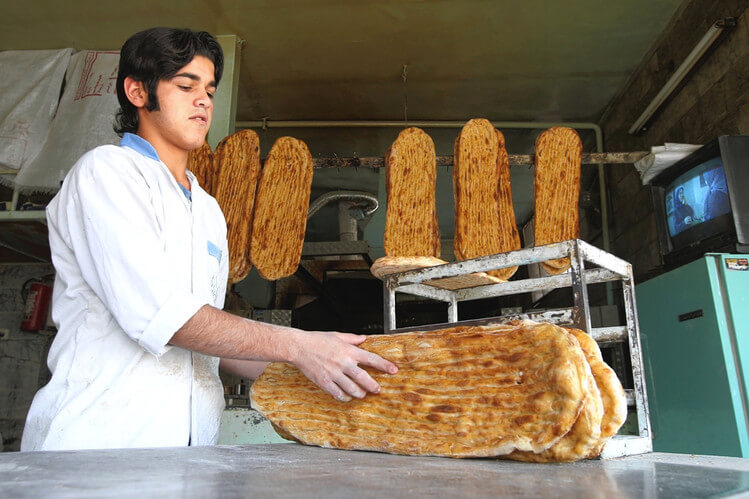
The word “Barbari” means “belonging to Barbar,” and Barbar was an ethnic group that lived in the northeast of Iran near the Afghanistan borders. َDuring the Qajar dynasty, this tribe began baking Persian bread and brought it to Tehran. Since then, Barbari bread has become one of the most popular types of bread in Iran. It is also available in all parts of the country in traditional and industrial forms.
Barbari is the thickest Iranian flatbread suitable for breakfast or with soups. Traditionally, this Persian bread is enriched with poppy seeds, sesame seeds, and wheat bran.
Notably, Barbari Bread is widely known as Persian flatbread in other countries such as Canada and the United States.
Sangak Bread (Nan-e Sangak)

Sangak bread is a traditional Iranian bread baked on small stones and is considered Iranians’ national bread. In the late 16th century, Sheikh Baha’i invented this Persian bread and its stone oven.
Even after 500 years, Sangak bread is still baked in its original form. However, due to the fast and modern life, this Persian bread is also cooked in industrial ovens; But Sangak bread baked in Sangaki Tandoor tastes better. Iranians decorate this traditional bread with poppy seeds, sesame, or some dried herbs.
Besides, since Sangak bread is made with whole wheat flour, it also has the highest nutritional value among other Iranian breads.
Moreover, it goes well with different kinds of Persian food such as Abgoosht, Halim, Kash Bedemjan, etc.
Notably, Sangak bread is very popular in The Republic of AzerbaijanIran as well. Moreover, the fame of this delicious Persian bread has gone so far that CNN has published the Iranian Sangak bread in the list of 50 of the world’s best bread.
Lastly, we recommend that you visit a Sangak bread bakery on your Iran trip, stand in line, watch the Sangak bread baking show, and enjoy the taste of fresh and warm Sangak bread.
"It takes a pair of deft bakers to craft this addictive Iranian flatbread, which is cooked directly on a bed of hot pebbles. That blazing-hot surface pocks the wheat dough with golden blisters, and it gives sangak -- also known as nan-e sangak -- a characteristic chewiness. If you're lucky enough to taste sangak hot from the oven, enjoy a heavenly contrast of crisp crust and tender crumb. Eat the flatbread on its own, or turn it into an Iranian-style breakfast: Use a piece of sangak to wrap salty cheese and a bundle of aromatic green herbs."
CNN
Taftoon Bread (Nan-e Taftoon)
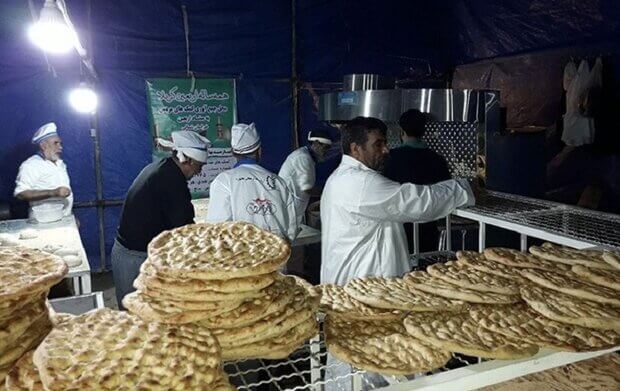
The Persian bread Taftoon is a round loaf that is commonly cooked in villages, but there are also bakeries in cities that prepare it. Besides, baking Taftoon bread is easier compared to other Iranian breads.
The word “Taftoon” comes from “Tafan,” which means “heating.” According to the Iranian national epics book, Shahnameh, Iranians have prepared Taftoon bread for centuries. This Iranian bread’s traditional cooking method is baking it in a clay Tandoor called “Tanoor.”
Finally, this Iranian bread is also famous in India and Pakistan.
Sheermal bread (Naan Sheermal)
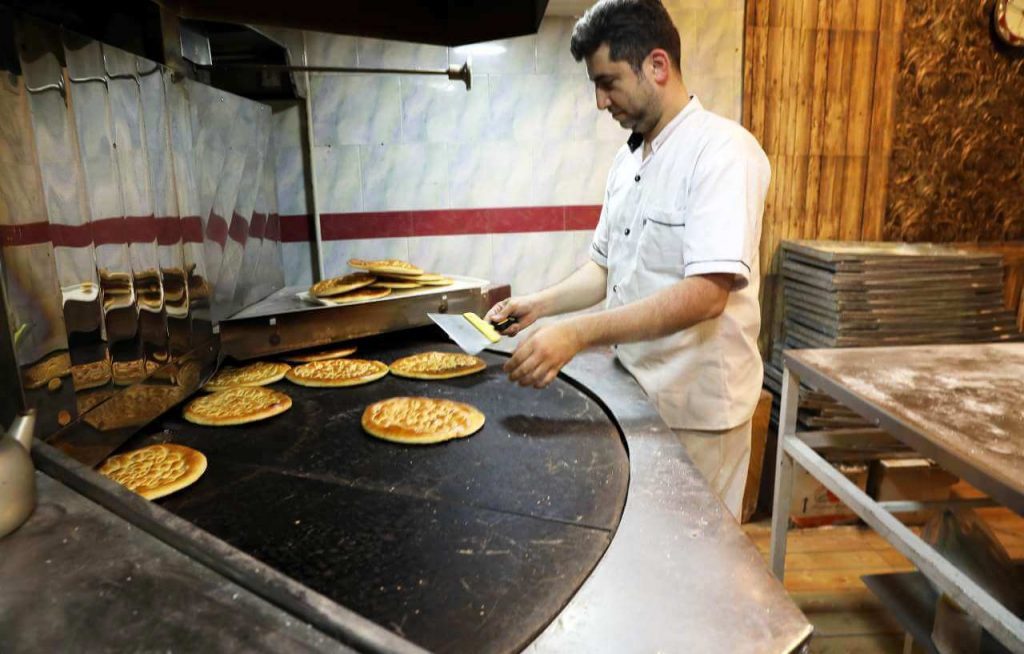
Shirmal bread or Naan Sheermal is a traditional saffron-flavored Iranian bread. The name “Sheermal” comes from the Persian word “sheer”, meaning milk, and indicates they knead the dough with milk rather than water. Sheermal gets its pleasant aroma from Saffron, Rosewater, and cardamom.
You can buy Sheermal bread from pastries and large bakeries that prepare different types of bread. Moreover, you can find this Persian bread in most of the villages in Iran.
Moreover, this Persian bread is moderately sweet and resembles Danish pastry and it is also popular in India, Pakistan, and Mongolia.
Nutritional Facts of Persian Bread
The following table shows the nutritional value and calories of different types of Persian bread.
*Serving Size:100 g
Finally, please leave your comments if you have any other information or questions about Persian Bread.
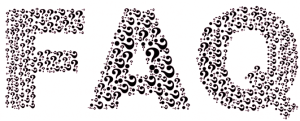
Most Frequent Questions and Answers about
Persian Bread
Like this article?
Subscribe To Our Newsletter
Get updated articles about Iran trip
